Abstract
1. Electromyography (surface and intramuscular) has been used to study the reflex responses of the human flexor digitorum profundus (FDP) to angular rotation of the distal interphalangeal joint of the 4th finger. This has been done with the hand in three separate positions which, owing to the arrangement of the various tendons, allow the movement to be transmitted to (a) both the flexor and extensor muscles, (b) FDP alone (extensors disengaged) and (c) neither flexor nor extensor muscles (all muscles disengaged, but cutaneous and joint receptors still potentially activated). The stimuli were applied while the subject was voluntarily contracting FDP to produce a constant level of EMG activity; this remained possible when the muscle was disengaged from the joint. 2. With all muscles connected, FDP behaved similarly to the analogous long flexor of the thumb. 'Stretch' elicited a prolonged complex response starting with a short-latency component corresponding to the tendon jerk. Unloading of the contracting muscle caused a pronounced reduction of its on-going EMG activity. The latency of this latter effect was approximately 20 ms greater than that of the initial stretch-evoked response, thereby demonstrating that it was not due to a disfacilitation via the short-latency pathway (on reduction of the tonic spindle afferent firing from FDP as it shortened). 3. With all muscles disengaged, movement of the joint in either direction evoked simply a weak, variable excitatory response, with a latency somewhat greater than that of the normal unloading response. This was attributed to the activation of cutaneous and/or joint receptors. The effectiveness of the disengagement of the flexor was demonstrated by the abolition of its normal stretch-evoked short-latency response. 4. With the flexor engaged and the extensors disengaged both stretch and release evoked their normal types of response. In control experiments, surface EMG recordings from the interosseus muscles confirmed that the procedure used for extensor disconnection was effective. These findings exclude the possibility that the reduction of EMG activity of the unloading response of FDP might be attributable to an inhibition evoked by the concomitant stretch of its antagonists. 5. The long-latency unloading response (whether with the extensors engaged or disengaged) remained when the sensory receptors in the finger itself were inactivated, confirming that these were not responsible.(ABSTRACT TRUNCATED AT 400 WORDS)
Full text
PDF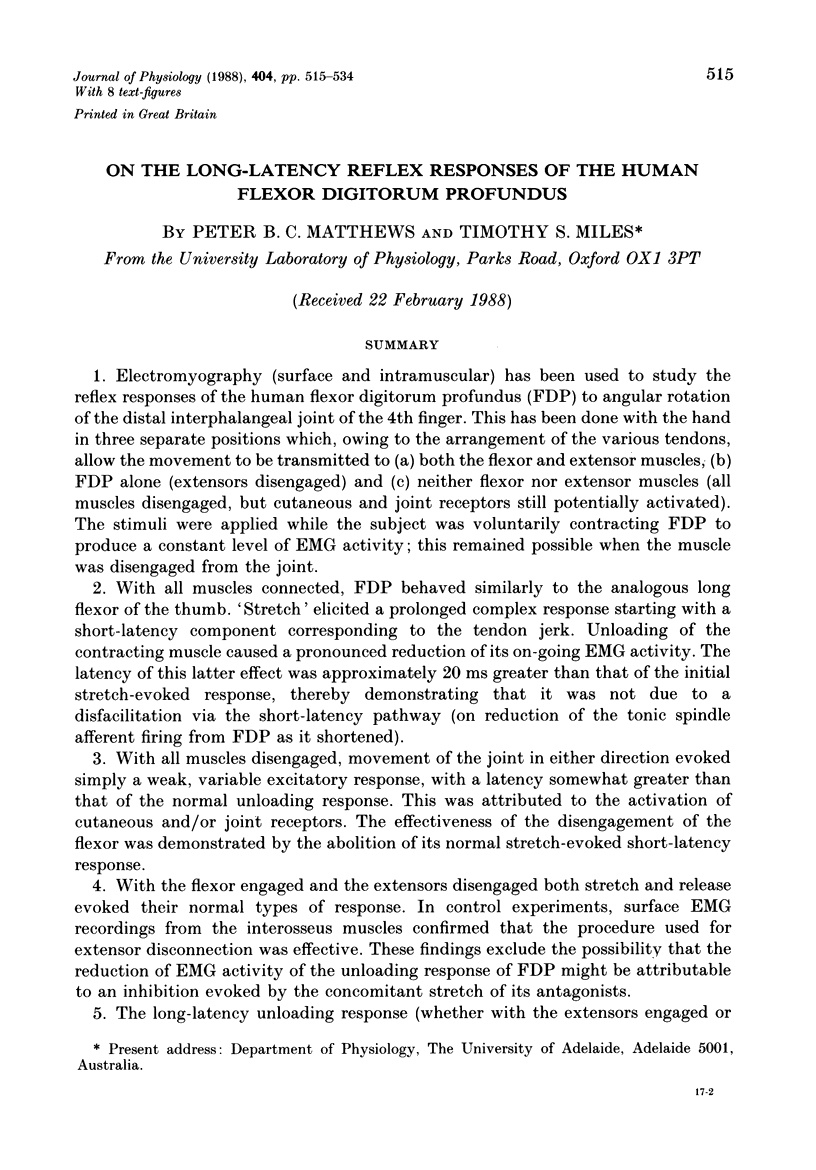
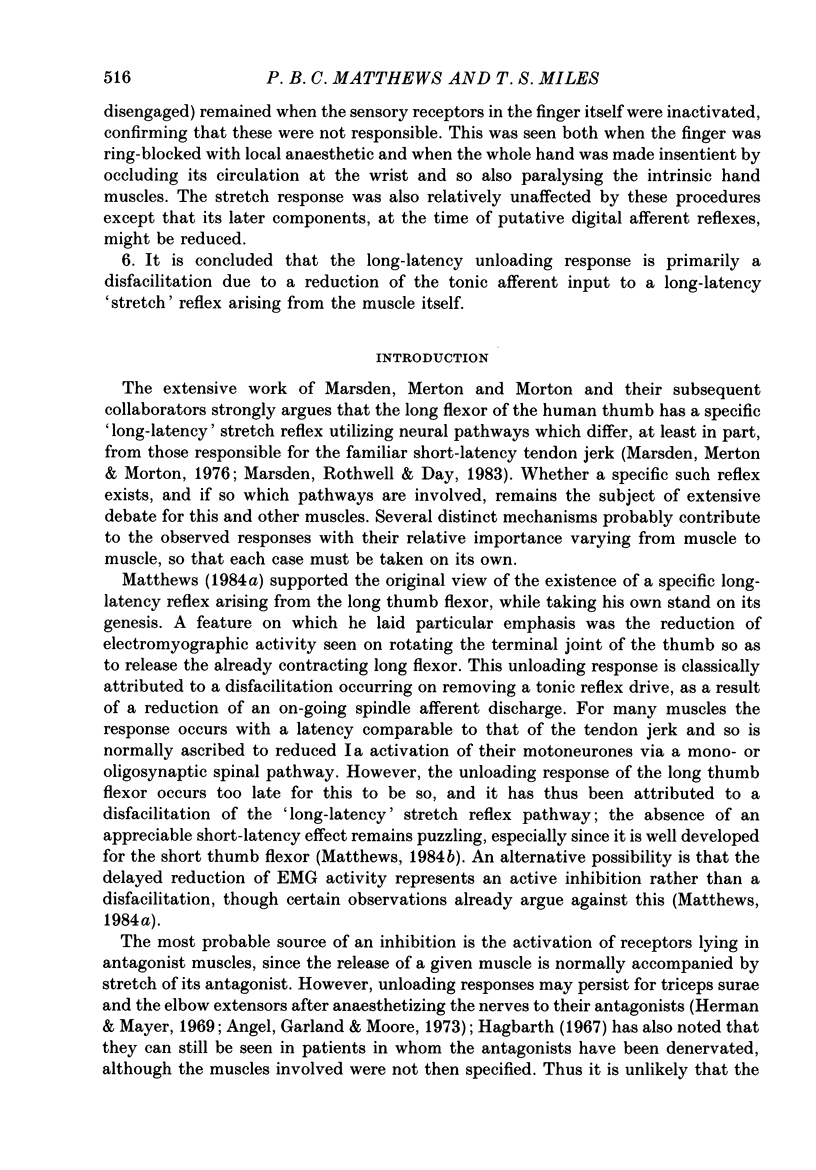
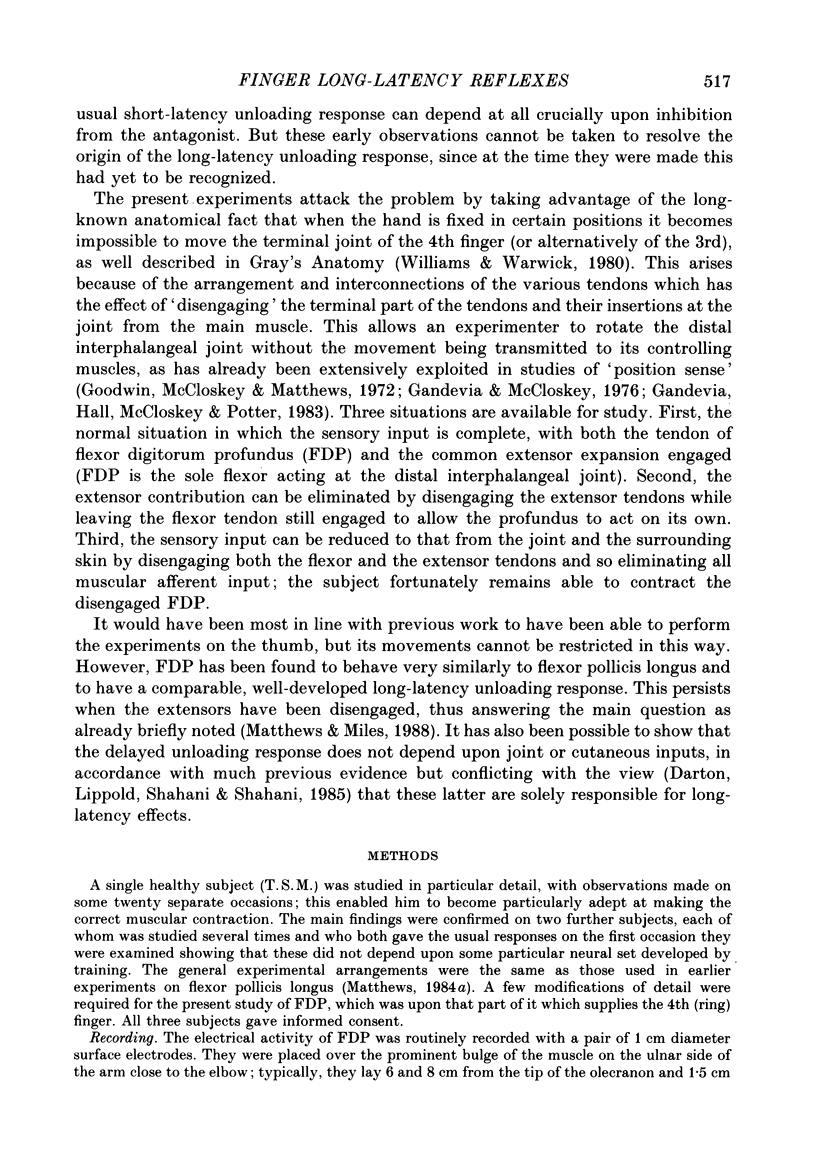
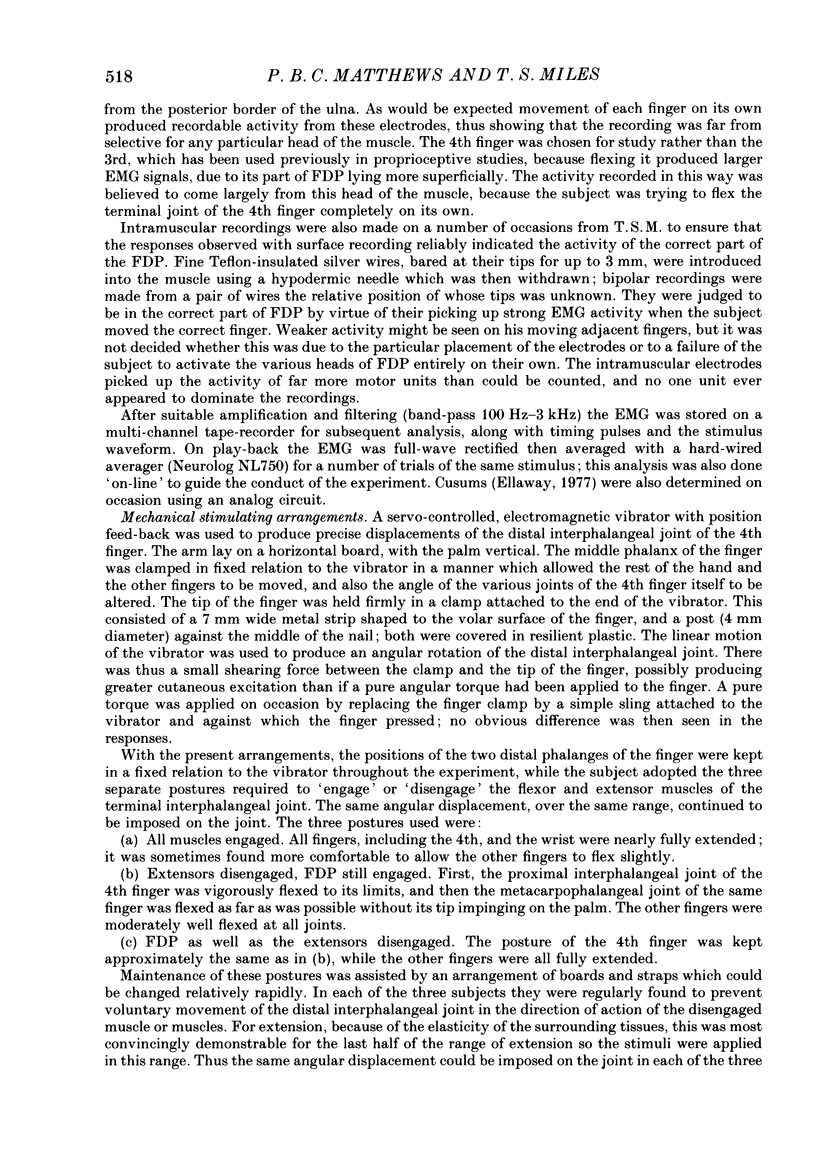
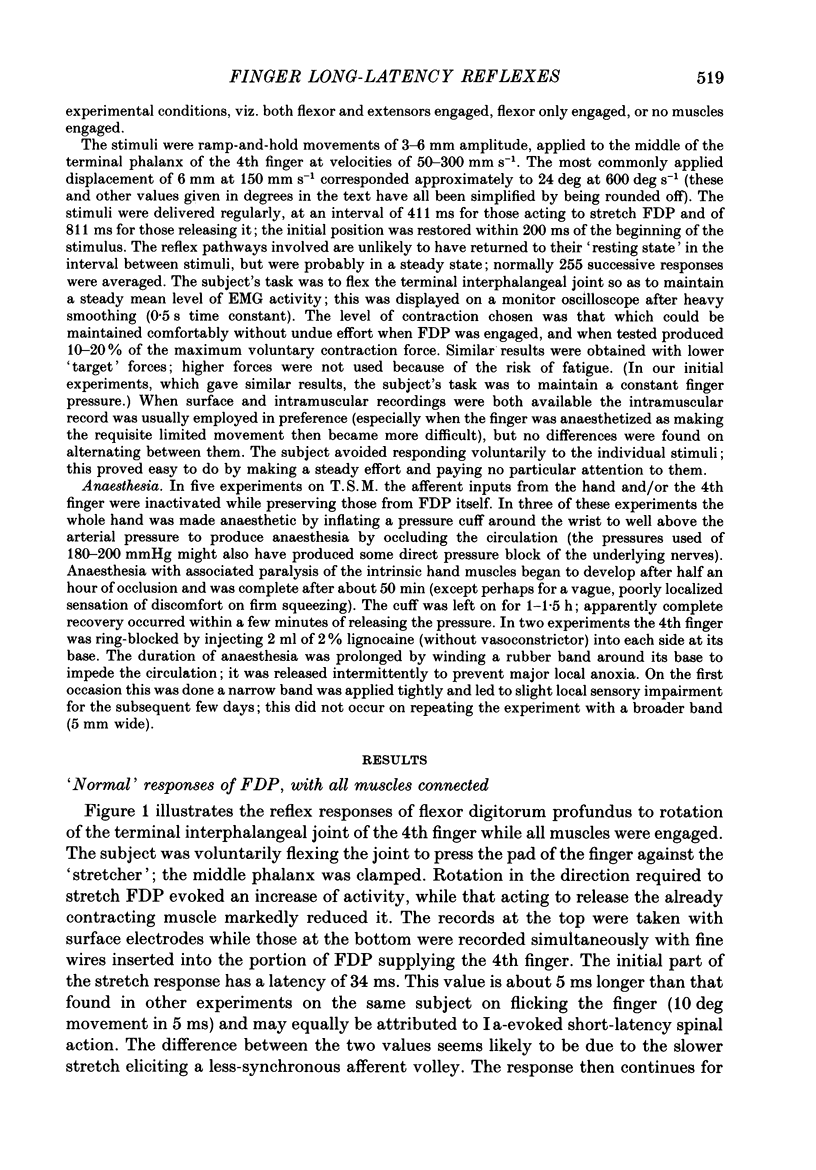
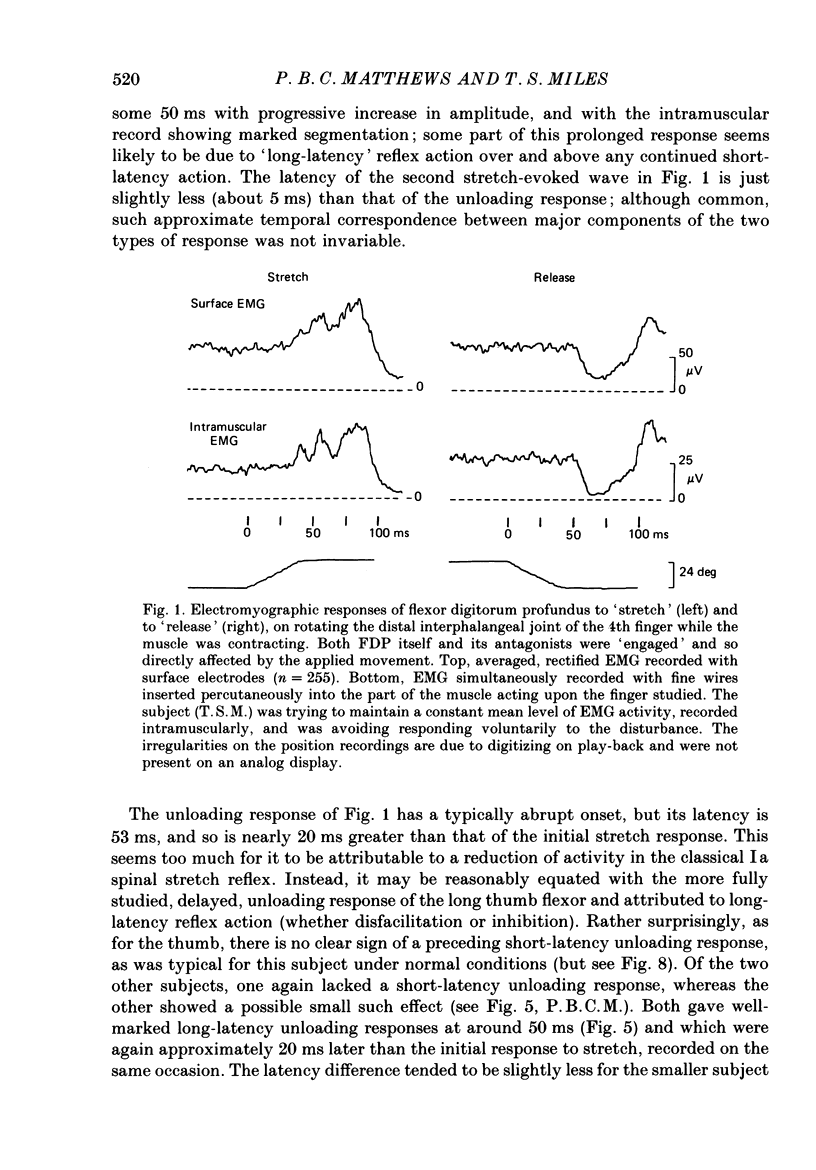
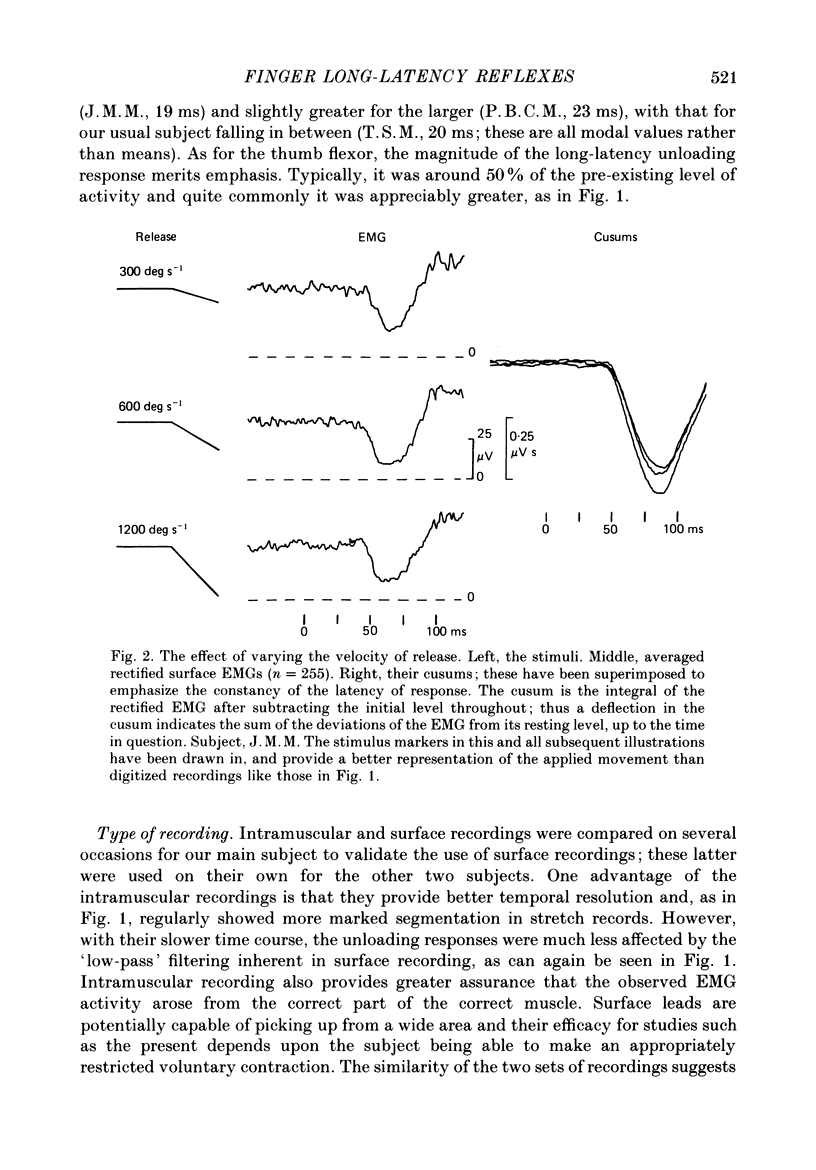
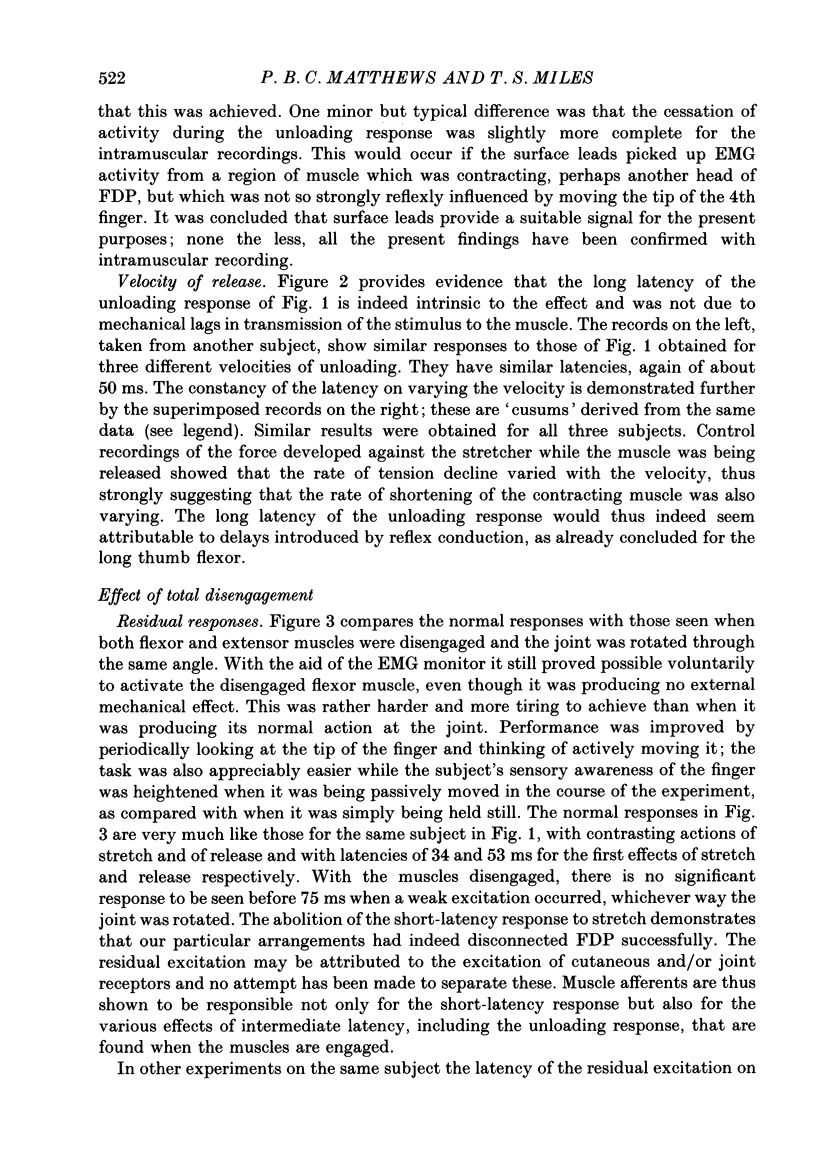
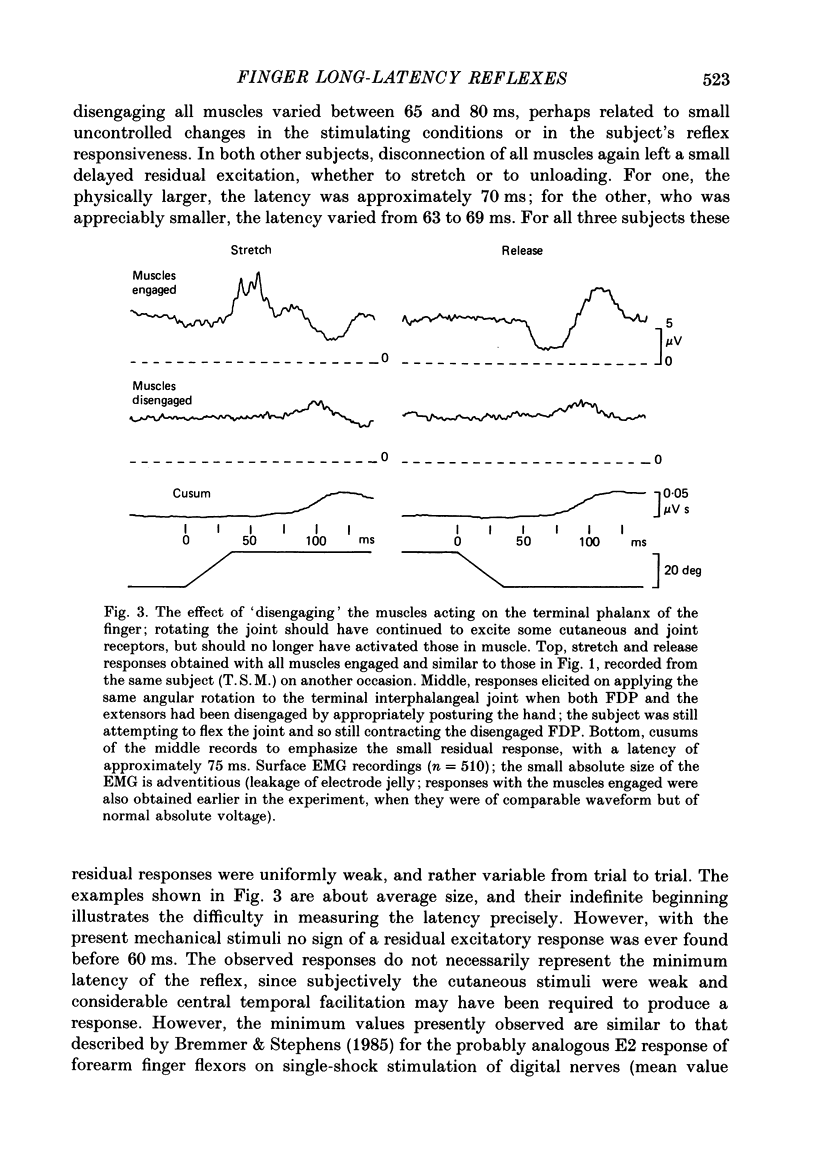
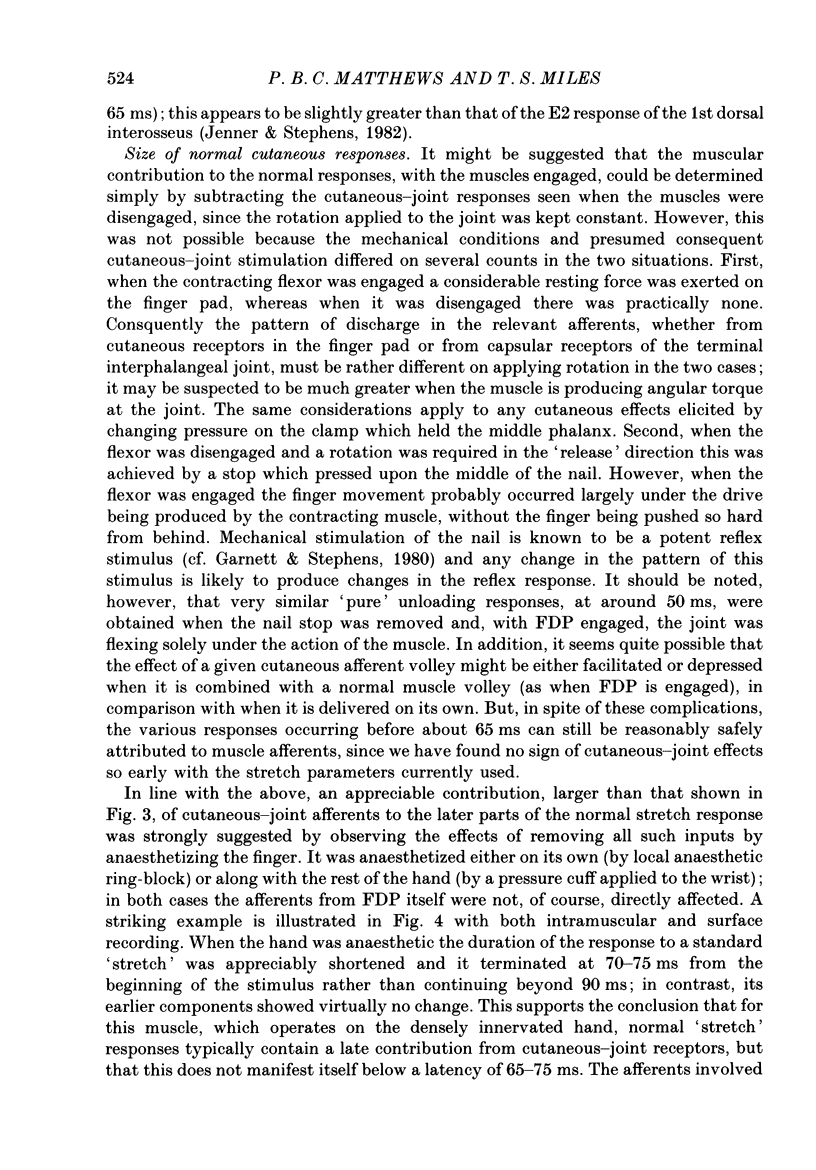
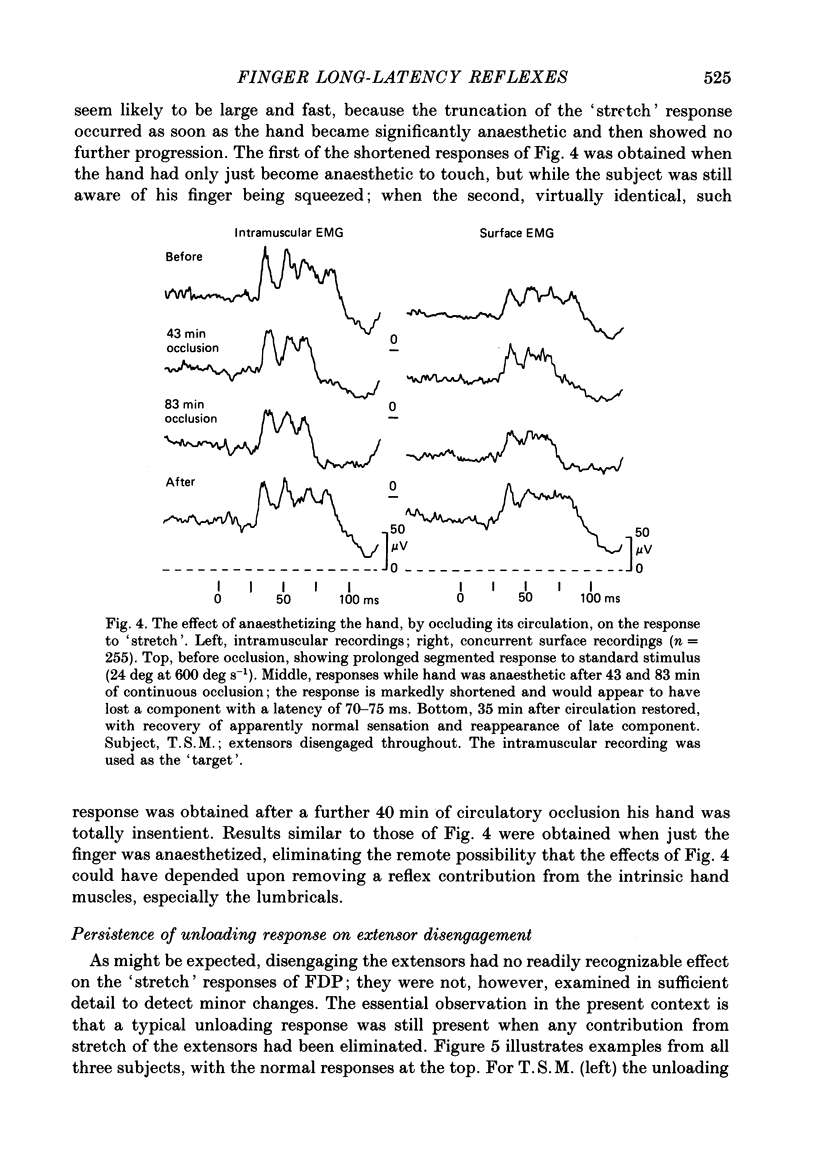
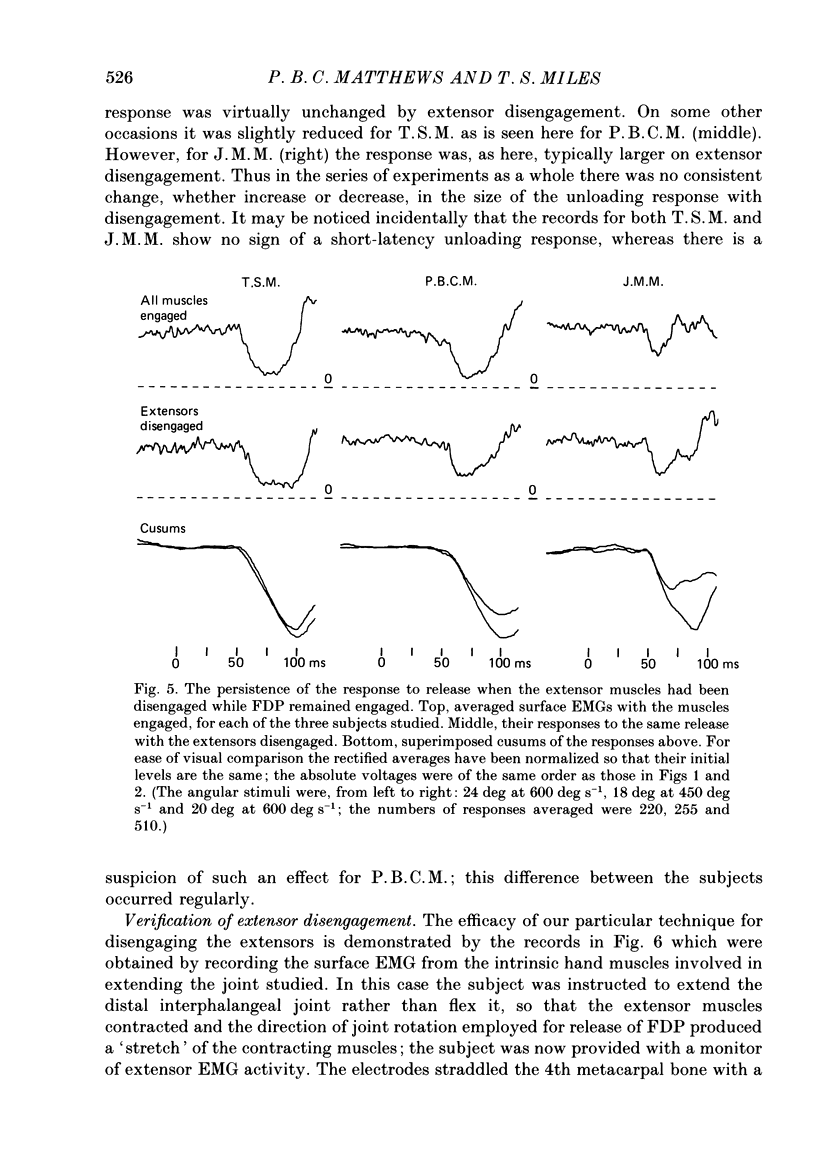
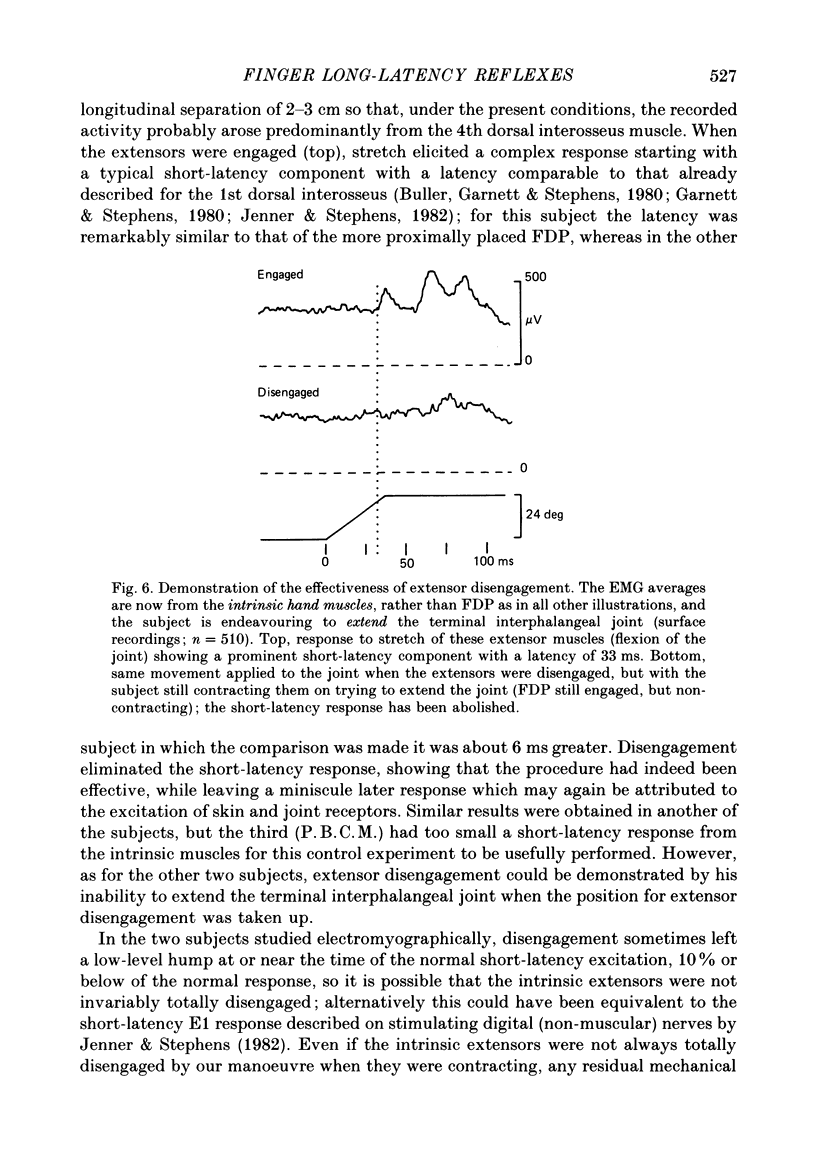
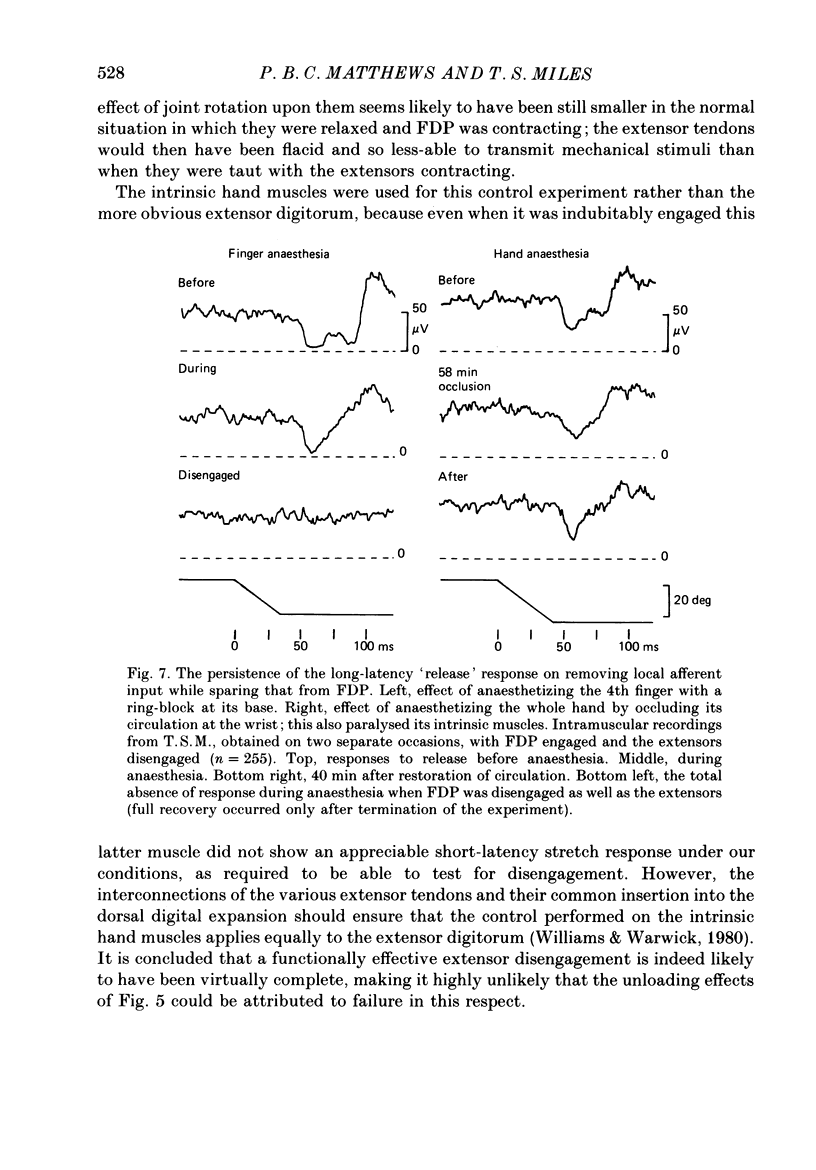
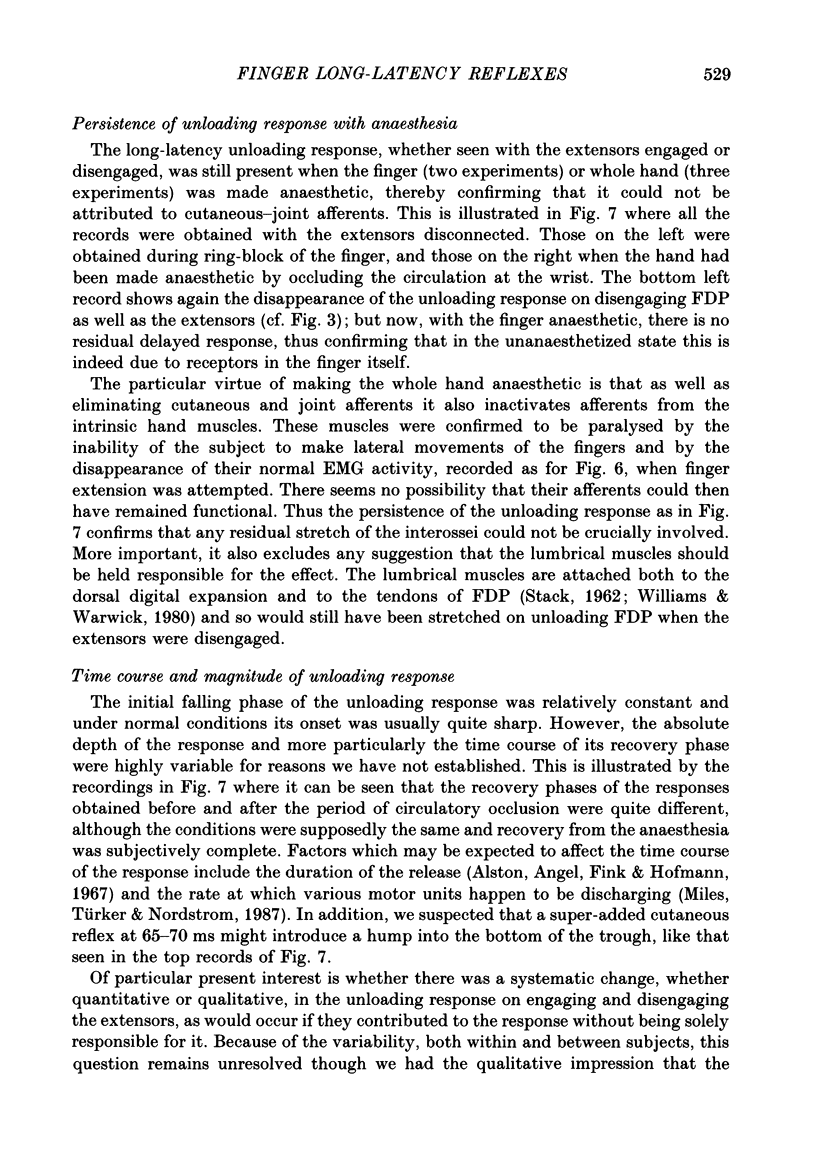
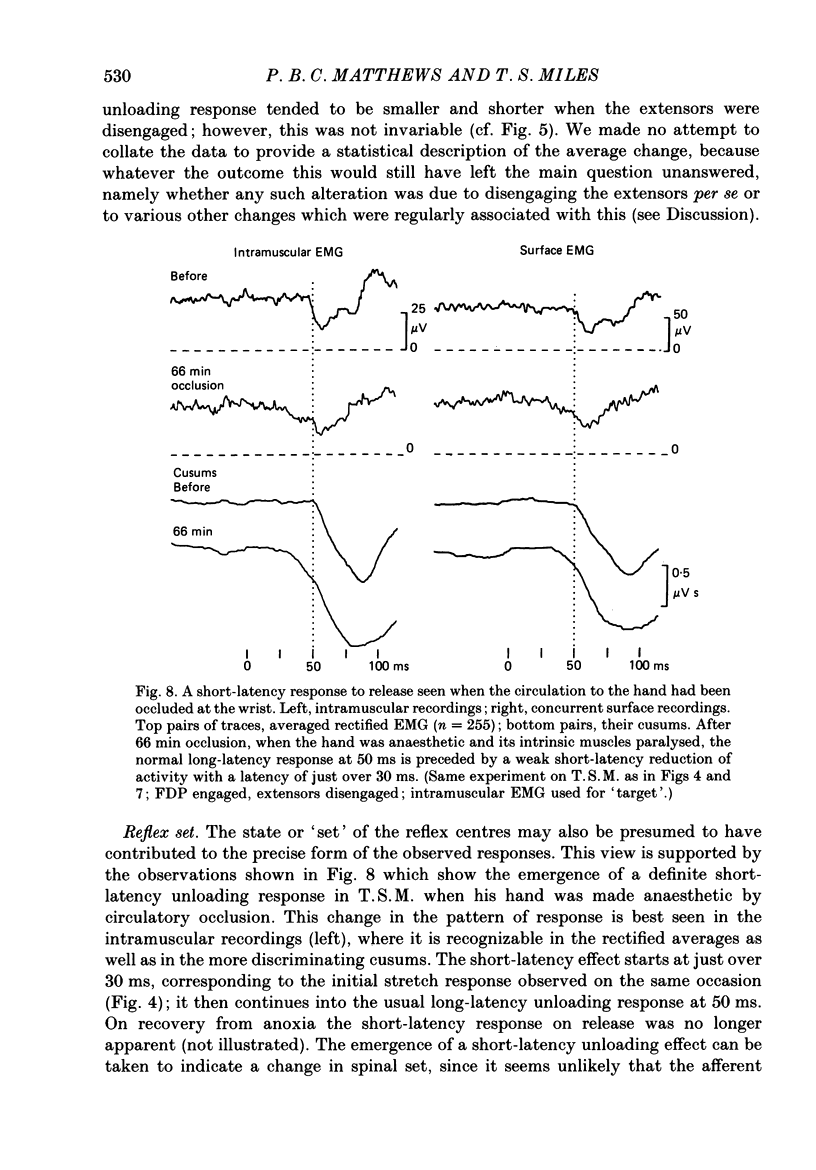
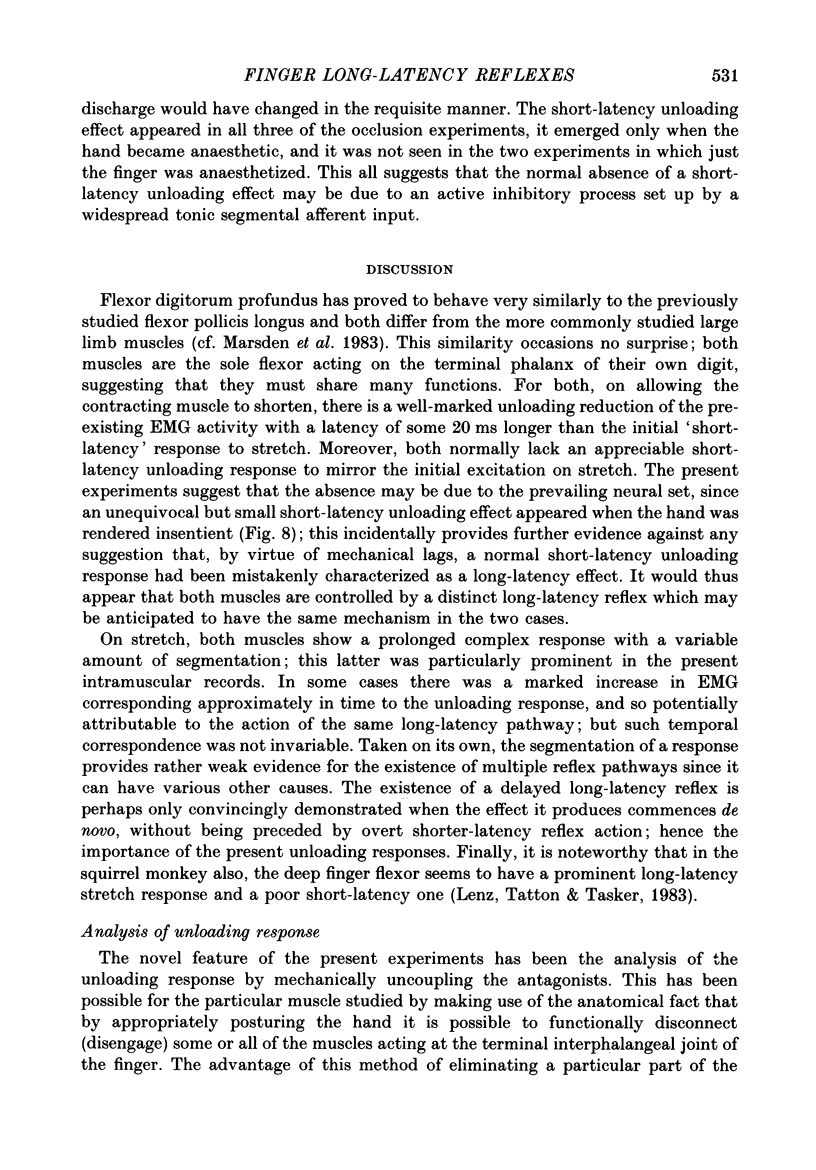
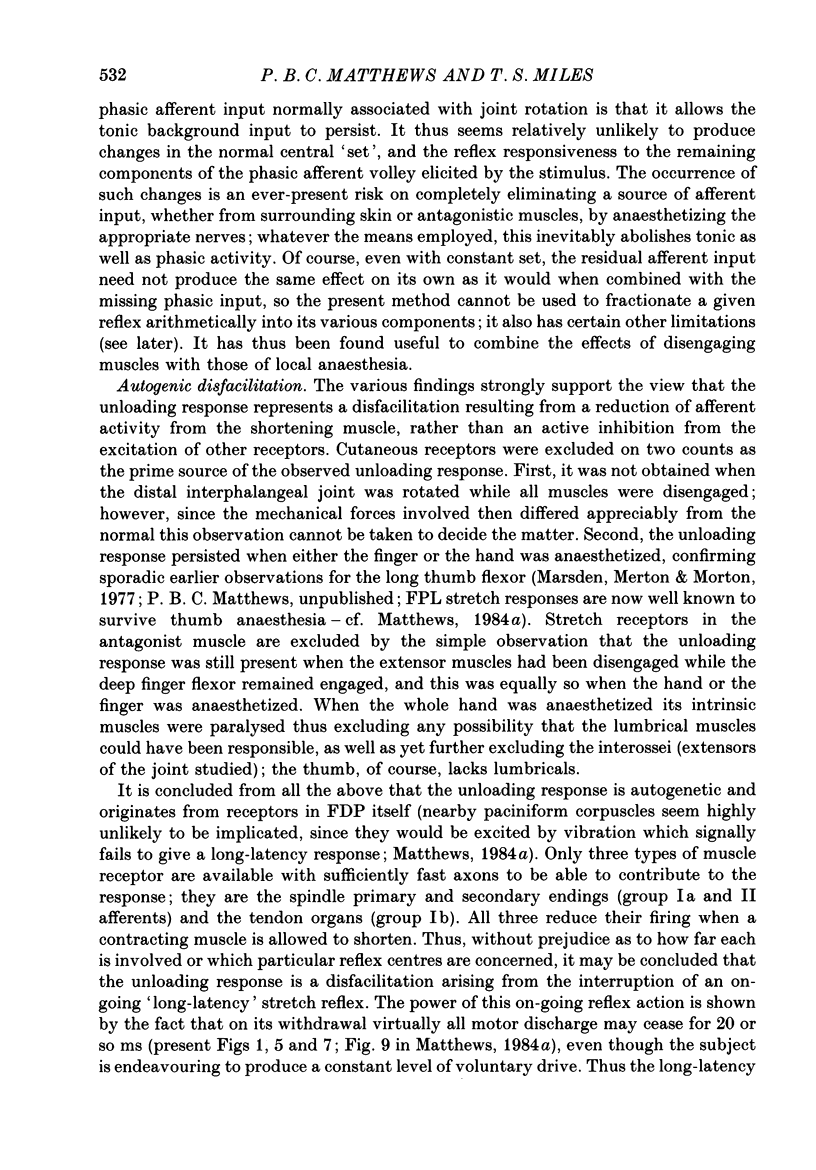
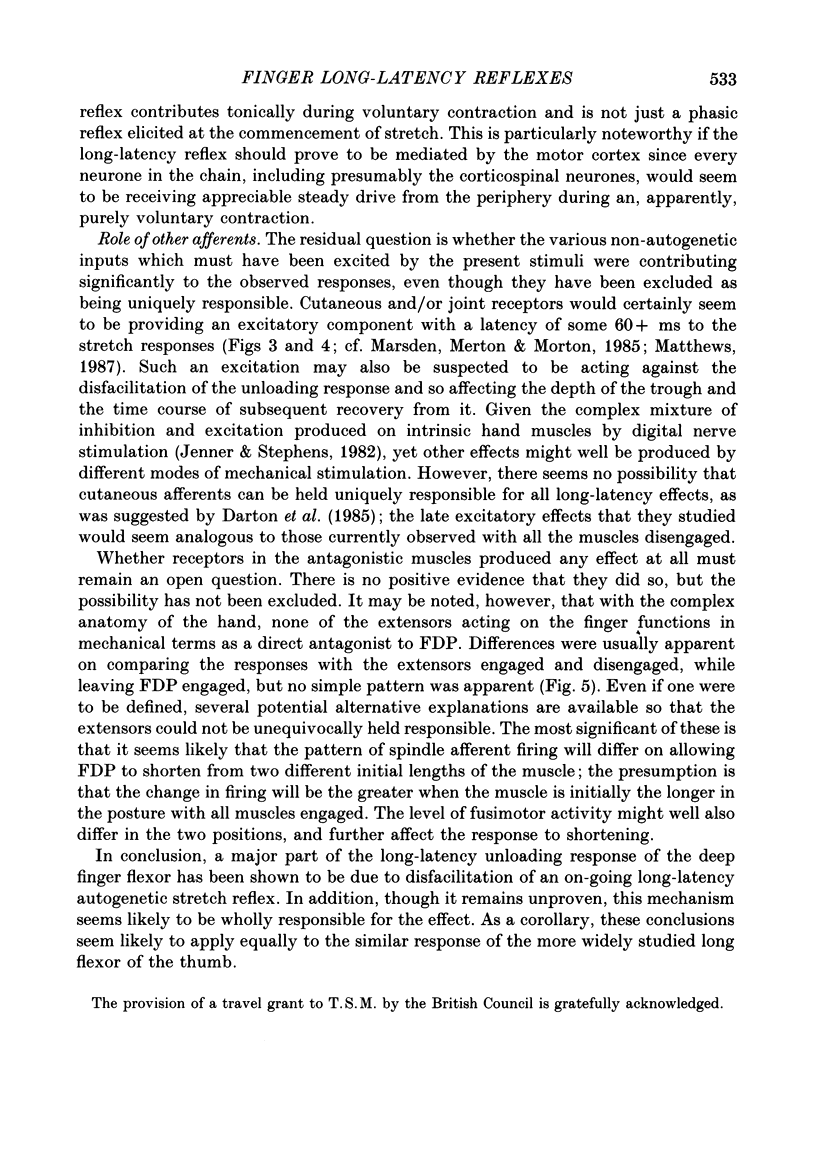
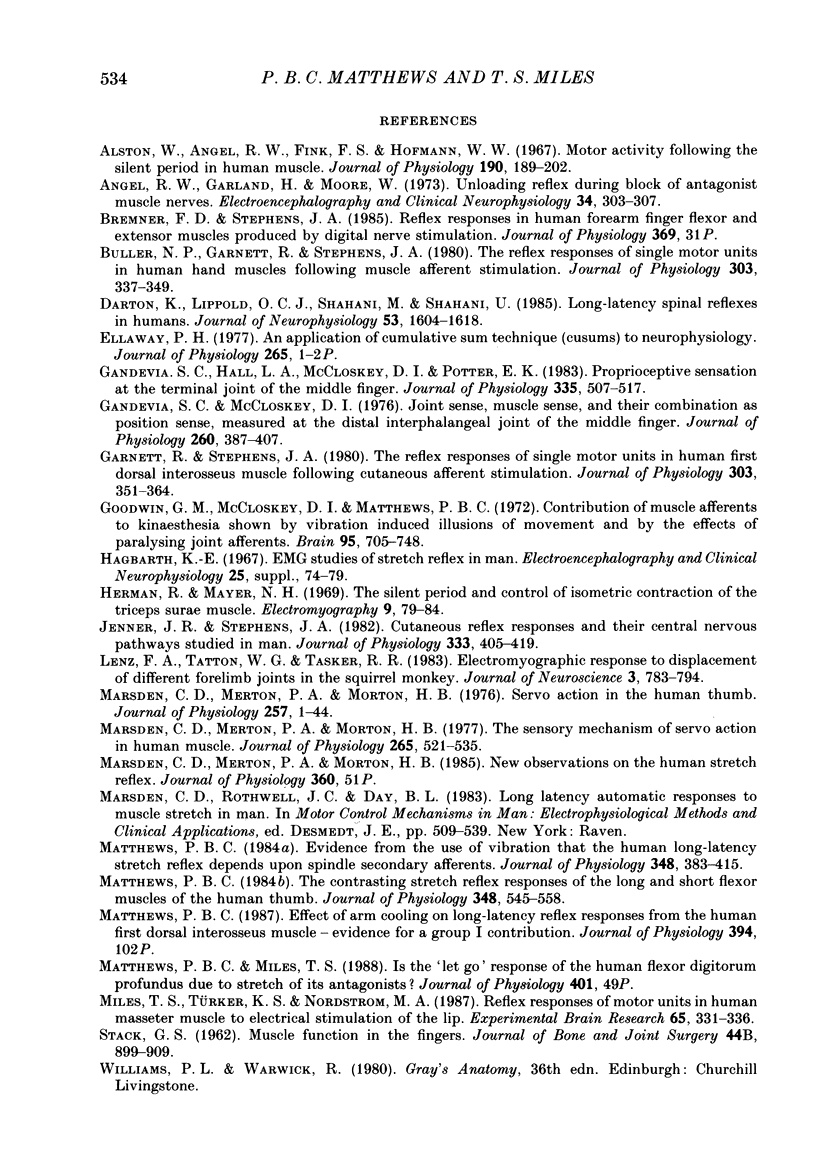
Selected References
These references are in PubMed. This may not be the complete list of references from this article.
- Alston W., Angel R. W., Fink F. S., Hofmann W. W. Motor activity following the silent period in human muscle. J Physiol. 1967 May;190(1):189–202. doi: 10.1113/jphysiol.1967.sp008201. [DOI] [PMC free article] [PubMed] [Google Scholar]
- Angel R. W., Garland H., Moore W. Unloading reflex during blockade of antagonist muscle nerves. Electroencephalogr Clin Neurophysiol. 1973 Mar;34(3):303–307. doi: 10.1016/0013-4694(73)90256-3. [DOI] [PubMed] [Google Scholar]
- Buller N. P., Garnett R., Stephens J. A. The reflex responses of single motor units in human hand muscles following muscle afferent stimulation. J Physiol. 1980 Jun;303:337–349. doi: 10.1113/jphysiol.1980.sp013289. [DOI] [PMC free article] [PubMed] [Google Scholar]
- Darton K., Lippold O. C., Shahani M., Shahani U. Long-latency spinal reflexes in humans. J Neurophysiol. 1985 Jun;53(6):1604–1618. doi: 10.1152/jn.1985.53.6.1604. [DOI] [PubMed] [Google Scholar]
- Ellaway P. H. An application of cumulative sum technique (cusums) to neurophysiology [proceedings]. J Physiol. 1977 Feb;265(1):1P–2P. [PMC free article] [PubMed] [Google Scholar]
- Gandevia S. C., Hall L. A., McCloskey D. I., Potter E. K. Proprioceptive sensation at the terminal joint of the middle finger. J Physiol. 1983 Feb;335:507–517. doi: 10.1113/jphysiol.1983.sp014547. [DOI] [PMC free article] [PubMed] [Google Scholar]
- Gandevia S. C., McCloskey D. I. Joint sense, muscle sense, and their combination as position sense, measured at the distal interphalangeal joint of the middle finger. J Physiol. 1976 Sep;260(2):387–407. doi: 10.1113/jphysiol.1976.sp011521. [DOI] [PMC free article] [PubMed] [Google Scholar]
- Garnett R., Stephens J. A. The reflex responses of single motor units in human first dorsal interosseous muscle following cutaneous afferent stimulation. J Physiol. 1980 Jun;303:351–364. doi: 10.1113/jphysiol.1980.sp013290. [DOI] [PMC free article] [PubMed] [Google Scholar]
- Goodwin G. M., McCloskey D. I., Matthews P. B. The contribution of muscle afferents to kinaesthesia shown by vibration induced illusions of movement and by the effects of paralysing joint afferents. Brain. 1972;95(4):705–748. doi: 10.1093/brain/95.4.705. [DOI] [PubMed] [Google Scholar]
- Hagbarth K. E. EMG studies of stretch reflexes in man. Electroencephalogr Clin Neurophysiol. 1967;(Suppl):74–79. [PubMed] [Google Scholar]
- Herman R., Mayer N. H. The silent period and control of isometric contraction of the triceps surae muscle. Electromyography. 1969 Jan-Apr;9(1):79–84. [PubMed] [Google Scholar]
- Jenner J. R., Stephens J. A. Cutaneous reflex responses and their central nervous pathways studied in man. J Physiol. 1982 Dec;333:405–419. doi: 10.1113/jphysiol.1982.sp014461. [DOI] [PMC free article] [PubMed] [Google Scholar]
- Lenz F. A., Tatton W. G., Tasker R. R. Electromyographic response to displacement of different forelimb joints in the squirrel monkey. J Neurosci. 1983 Apr;3(4):783–794. doi: 10.1523/JNEUROSCI.03-04-00783.1983. [DOI] [PMC free article] [PubMed] [Google Scholar]
- Marsden C. D., Merton P. A., Morton H. B. Servo action in the human thumb. J Physiol. 1976 May;257(1):1–44. doi: 10.1113/jphysiol.1976.sp011354. [DOI] [PMC free article] [PubMed] [Google Scholar]
- Marsden C. D., Merton P. A., Morton H. B. The sensory mechanism of servo action in human muscle. J Physiol. 1977 Feb;265(2):521–535. doi: 10.1113/jphysiol.1977.sp011728. [DOI] [PMC free article] [PubMed] [Google Scholar]
- Marsden C. D., Rothwell J. C., Day B. L. Long-latency automatic responses to muscle stretch in man: origin and function. Adv Neurol. 1983;39:509–539. [PubMed] [Google Scholar]
- Matthews P. B. Evidence from the use of vibration that the human long-latency stretch reflex depends upon spindle secondary afferents. J Physiol. 1984 Mar;348:383–415. doi: 10.1113/jphysiol.1984.sp015116. [DOI] [PMC free article] [PubMed] [Google Scholar]
- Matthews P. B. The contrasting stretch reflex responses of the long and short flexor muscles of the human thumb. J Physiol. 1984 Mar;348:545–558. doi: 10.1113/jphysiol.1984.sp015124. [DOI] [PMC free article] [PubMed] [Google Scholar]
- Miles T. S., Türker K. S., Nordstrom M. A. Reflex responses of motor units in human masseter muscle to electrical stimulation of the lip. Exp Brain Res. 1987;65(2):331–336. doi: 10.1007/BF00236305. [DOI] [PubMed] [Google Scholar]


